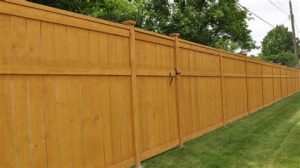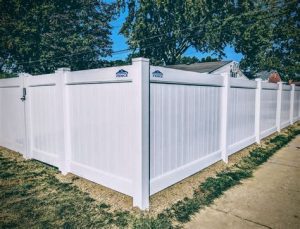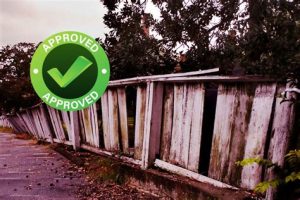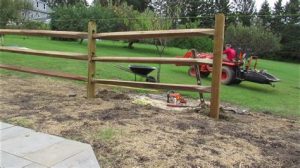Learn how to navigate fence permit requirements, gather documentation, create a site plan, specify materials, and submit a complete permit package successfully.When embarking on a fence installation project, navigating the permitting process can be one of the most daunting steps. Ensuring that your new fence is compliant with local regulations not only helps avoid penalties but also ensures your property remains safe and aesthetically harmonious with the neighborhood. Understanding how to document your fence installation for permitting is crucial in streamlining this process. From understanding your local permit requirements to creating a detailed site plan and providing clear specifications of the materials you intend to use, thorough documentation is key to a smooth approval. In this blog post, we will guide you through each essential step, ensuring you have all the necessary tools to successfully submit your permit package and move forward with your fence installation with confidence.
Understanding permit requirements
When it comes to installing a fence, one of the first steps is to understand the permit requirements specific to your location. Many municipalities require homeowners to obtain a permit before erecting a fence to ensure that it meets local regulations and zoning laws.
Before beginning your installation, it is crucial to check with your local building department or zoning office. These offices typically have guidelines and may require plans that detail the fence’s height, type, and location. Failing to secure the necessary permits can lead to fines and complications such as needing to remove or alter the fence after installation.
Additionally, you should verify whether there are any setback requirements or restrictions based on your property’s zoning classification. This will help you avoid any potential disputes with neighbors and ensure that your fence installation is compliant with local guidelines.
Gathering necessary documentation
When it comes to installing a fence, gathering necessary documentation is a crucial step in the permitting process. Proper documentation ensures that your project complies with local laws and regulations. Failure to provide the right documents can lead to delays or even the denial of your permit request.
- Property Deed: Verify ownership and boundaries.
- Site Survey: A professional survey can provide precise measurements and boundary locations.
- Fence Specifications: Details about the type of fence, height, and materials to be used.
- Local Ordinance Compliance: Check local zoning laws and regulations to ensure your fence meets required standards.
- Neighbor Notifications: In some jurisdictions, notifying neighbors about your fence installation may be necessary.
Make sure to check with your local building department for any other specific documents they may require. Each jurisdiction may have different regulations, and being well-prepared will help you move forward with your fence installation smoothly.
Creating a detailed site plan
When it comes to obtaining a permit for your fence installation, one of the most crucial steps is creating a detailed site plan. This plan serves not only as a visual representation of your proposed project but also as a necessary document to submit with your permit application. A comprehensive site plan ensures that you comply with local regulations and helps avoid potential disputes with neighbors or authorities.
- Property Lines: Clearly mark the boundaries of your property to establish where your fence will be installed.
- Existing Structures: Indicate the location of existing buildings, driveways, and landscape features.
- Fence Location: Show where the fence will be installed in relation to property lines and other structures.
- Measurements: Provide accurate dimensions of the property and the proposed fence placement.
- Setbacks: Indicate the distance from the fence to the property line, as many areas have specific setback requirements.
In summary, a detailed site plan not only aids in the permitting process but also contributes to a smoother installation experience. By providing necessary information and drawing a clean and clear layout, you strengthen your application and make it easier for authorities to approve your fence installation.
Providing fence material specifications
When installing a fence, providing fence material specifications is crucial for obtaining the necessary permits. This documentation ensures that all materials meet local zoning laws, safety regulations, and community guidelines. Each type of fence material—whether it’s wood, vinyl, aluminum, or chain-link—has specific requirements that need to be outlined.
- Type of Material: Clarify whether you’re using wooden, vinyl, metal, or composite fencing.
- Dimensions: Specify the height, width, and thickness of each material.
- Finish: Indicate whether the material is treated or untreated, painted or unpainted.
- Manufacturer Information: Include details about the manufacturer and any relevant compliance certifications.
- Color Options: Describe any color choices available, especially for materials like vinyl and metal.
Including these specifications helps the permitting authorities understand exactly what you plan to use. Each material may have different durability and maintenance requirements, which can be crucial in ensuring your fence meets safety standards and aligns with your neighborhood’s aesthetic guidelines.
Submitting the complete permit package
When it comes to installing a fence, submitting the complete permit package is a crucial step that ensures compliance with local regulations. A complete package typically includes all necessary documentation and forms required by your local government or municipality.
- Completed application form: This form collects essential information about your project.
- Site plan: A detailed map showcasing the intended location of the fence.
- Material specifications: Documentation outlining the types of materials to be used in the construction.
- Proof of ownership: Verification that you own the property where the fence will be installed.
- Neighbor notification: Depending on local regulations, you may need to notify your neighbors of your plans.
Make sure that all documents are filled out completely and accurately, as any discrepancies may delay the approval process. If you are unsure about what needs to be included, it’s always a good idea to contact your local permitting office for guidance.
Once your permit package is compiled, you can submit it either in person or online, depending on your municipality’s requirements. Ensure that you keep copies of everything submitted for your records.
Frequently Asked Questions
Why is documenting my fence installation important for permitting?
Documenting your fence installation is crucial for complying with local regulations and avoiding fines. Proper documentation provides proof that your installation meets zoning laws and property boundary guidelines.
What types of documentation should I gather before starting my fence installation?
Before starting your fence installation, gather necessary documents such as property surveys, local zoning laws, permits, and any homeowner association guidelines that apply.
How can I effectively photograph my fence installation process?
To effectively photograph your installation process, take wide shots to capture the entire area, close-ups for detailed work, and ensure you document each major step, from digging holes to setting posts.
What information should I include in my installation logs?
Your installation logs should include dates, times, weather conditions, materials used, steps completed, and any issues encountered during the installation process.
Do I need to inform my neighbors about my fence installation?
Yes, it’s often a good practice to inform your neighbors about your fence installation. This can help maintain good relationships and prevent disputes over property lines.
How should I label my installation photographs?
Label your installation photographs with dates, descriptions of what is shown, and any relevant notes about specific techniques or challenges faced during that stage of the installation.
What steps can I take after completing my fence installation to ensure compliance?
After completing your fence installation, review all permissions and documentation, double-check that your fence adheres to local laws, and submit any final paperwork required by your municipality.




